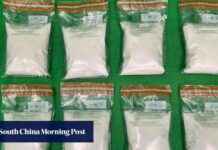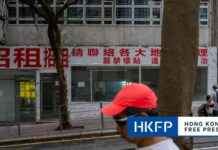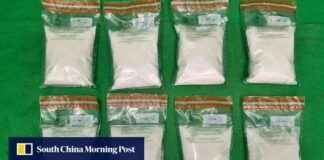Hong Kong Property Market Outlook: Impact of Fed Rate Cut
In the ever-evolving landscape of Hong Kong’s property market, the recent price war initiated by KT Marina has sent ripples throughout the industry. Jointly developed by K Wah International, Wheelock Properties, and China Overseas in the Kai Tak area, the residential project made headlines by slashing prices on 50 of its Phase I flats by up to 38.5 per cent. This aggressive move follows earlier discounts of 22 per cent and marks a significant shift in the pricing strategy of developers in the region.
The average price per square foot for these 50 units, after the discounts, now stands at HK$17,384 (US$2,229), which represents a 12 per cent reduction from the project’s initial listing of 208 flats in October last year. These revised prices are comparable to those offered by the neighboring Pavilia Forest I project, developed by New World Development and Far East Consortium. Notably, these prices are the lowest seen in the Kai Tak area in nearly eight years, with units priced at HK$16,008 per square foot during the first listing in July.
Market Trends and Developments
The decision by KT Marina to reduce prices comes at a time when Hong Kong developers are gearing up to launch at least six new projects in September, collectively offering 2,800 flats to prospective buyers. This flurry of new developments signals a renewed sense of optimism in the local property market, as developers look to capitalize on a potentially more active buying sentiment.
The optimism in Hong Kong’s property market is further bolstered by recent developments in global markets, particularly the United States. Federal Reserve Chair Jerome Powell’s indication of a willingness to reduce interest rates has had a positive impact on investor confidence worldwide. The Fed had previously raised its target rate 11 times between March 2022 and July last year but has maintained it unchanged in the nine meetings since then. The upcoming rate-setting meeting on September 17-18 is eagerly anticipated by market participants for further insights into the Fed’s monetary policy stance.
Implications of Fed Rate Cut
The potential rate cut by the Federal Reserve has significant implications for not just the US economy but also global markets, including Hong Kong’s property sector. Lower interest rates can translate to reduced borrowing costs, making mortgages more affordable for homebuyers. This, in turn, could stimulate demand for properties and drive up sales volumes in the market.
In Hong Kong, where property prices have long been a point of contention due to their exorbitant levels, any reduction in borrowing costs could provide a much-needed respite for prospective buyers. With developers already adjusting their pricing strategies to attract buyers, a supportive interest rate environment could further incentivize individuals to enter the property market.
Furthermore, the impact of a Fed rate cut extends beyond just the residential segment of the property market. Commercial real estate, industrial properties, and other sectors could also benefit from lower borrowing costs, potentially spurring investment and development activities across the board. This diversification of benefits could lead to a more balanced growth trajectory for the overall property market in Hong Kong.
Challenges and Risks
While the prospect of a Fed rate cut may bring positive implications for Hong Kong’s property market, there are challenges and risks that need to be considered. One of the key concerns is the ongoing trade tensions between the US and China, which have contributed to global economic uncertainties. Any escalation in trade disputes could dampen investor sentiment and impact property market dynamics in Hong Kong.
Additionally, the city’s own internal challenges, such as political unrest and social tensions, continue to pose risks to the stability of the property market. The recent protests and civil unrest have already had repercussions on various sectors of the economy, and the property market is not immune to these external factors.
Another factor to consider is the potential oversupply of housing units in the market, particularly with the influx of new projects slated for launch in the coming months. An oversupply situation could lead to increased competition among developers, resulting in further price reductions and margin pressures. Balancing supply and demand dynamics will be crucial in ensuring a sustainable growth path for the property market.
Conclusion
As Hong Kong’s property market braces for the impact of a potential Fed rate cut, developers and investors alike are closely monitoring global economic trends and local market dynamics. The recent price war initiated by KT Marina underscores the competitive landscape in the region and the strategies employed by developers to attract buyers.
While the prospect of lower interest rates may provide a boost to the property market, challenges such as trade tensions, internal unrest, and oversupply risks loom large on the horizon. Navigating these uncertainties will require a nuanced approach from stakeholders in the industry to ensure a stable and sustainable growth trajectory for Hong Kong’s property market.



















